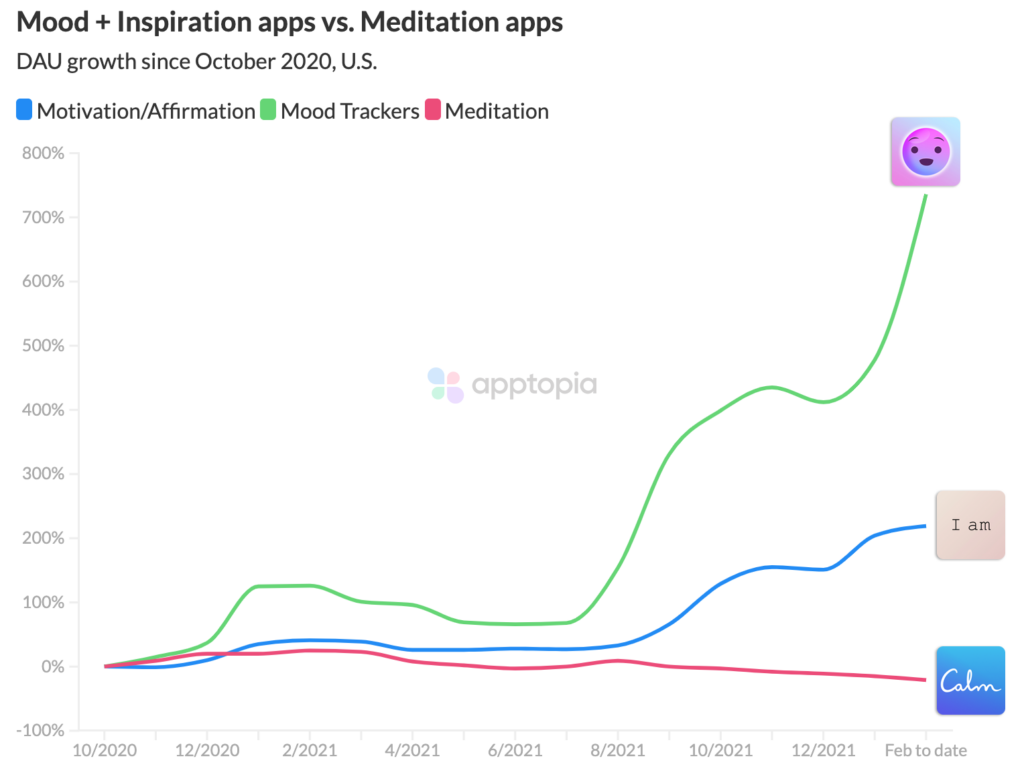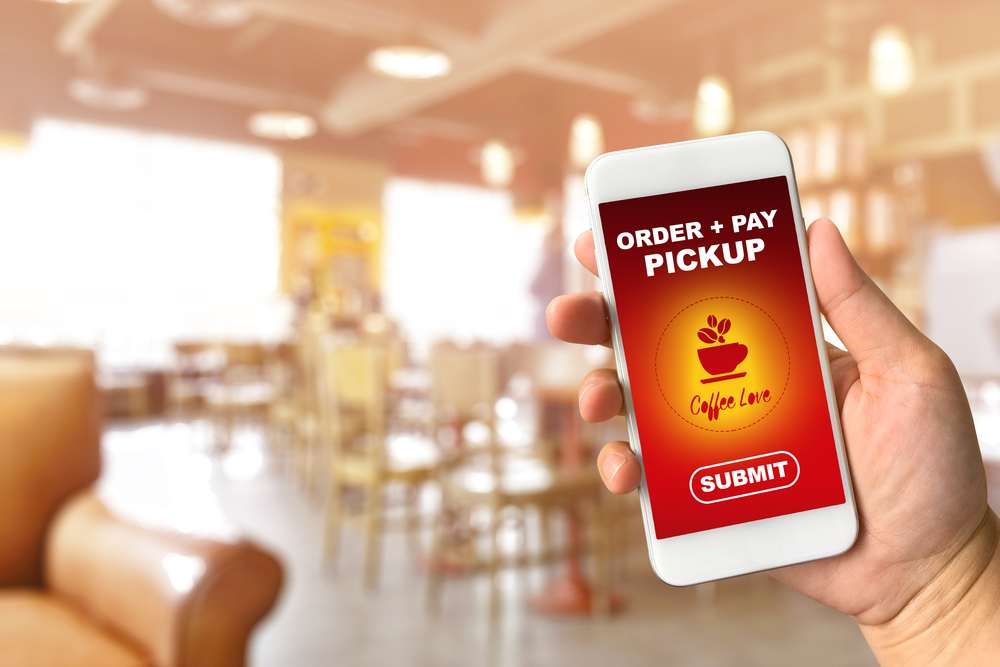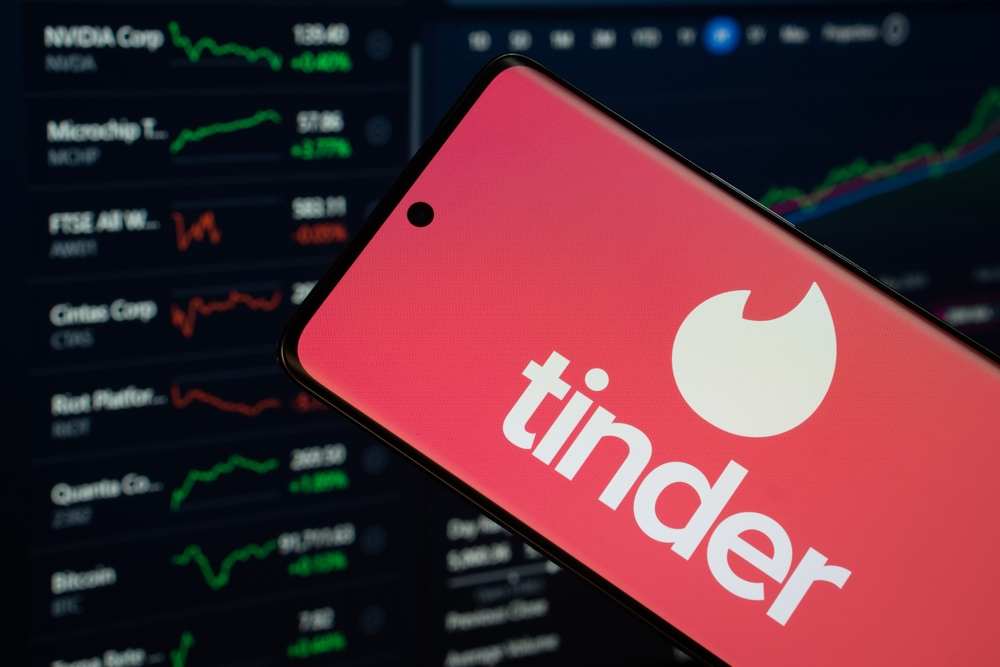Health and fitness apps have a predictable spike in downloads, revenue and usage every late December through January. For regular category leaders, like Calm, MyFitnessPal and Planet Fitness, rank may increase nominally with the seasonal intention-setting. The real story is of who shows up for the first time – especially if they sustain Top Chart status into mid-February.
This year presents a few “standout sustainers”: I AM: Affirmations and Motivation: Daily Quotes (both by publisher Monkey Taps). The two apps consistently ranked top 10 Free and Top Grossing in Health and Fitness. Mood tracking apps, Mood Balance and Breeze, were within the top 50.
Besides performance, the app names stood out because they indicated a micro-trend in digital health practices. Traditionally health and fitness apps were characterized as nutrition trackers and exercise companions. Then 2020 introduced a wave of mental health, led by meditation apps.
In 2022, the tide appears to be turning to a wave of emotional health apps.

The chart above shows the daily active user (DAU) growth average for each subcategory’s top 2 leaders since 4Q 2020.
- Mood Tracker apps: Breeze and Mood Balance
- Motivation/Affirmation apps: I AM: Affirmation and Motivation: Daily Quotes
- Meditation apps: Calm and Headspace
Meditation apps had enjoyed an off-season peak beginning in March 2020 and sustained relevance throughout the rest of the year. However, the chart picks up where mood trackers and affirmation/motivation apps leapt up to meet Calm and Headspace, in terms of usage growth rate in the U.S. Beginning in 2021, the two leading meditation apps have actually stagnated and declined, while the other two subcategories continued their climb. This may explain recent acquisitions made by both of the apps: Headspace acquired Sayana in January and Calm acquired a non-mobile company, Ripple Health.
Analyzing the popularity of the mood trackers and daily quote apps indicated some secrets to stickiness that really any industry should consider:
- Widgets. When iOS 14 launched in September 2020, publisher Monkey Taps who is behind I AM: Affirmation and Motivation: Daily Quotes developed widget capabilities right away. The result is more than a consistent reminder of their content because that could be done with banner notifications (which the apps also encourage you to set 10x a day). Widgets pull through the publisher’s UI to present aesthetically appealing content from the app and personalize a person’s homescreen. By the starting point of the chart above, DAUs for Affirmation/Motivation had jumped 100% since August.
- Considering strong Gen Z use of both these apps and recent virality of the Locket Widget, it’s safe to guess that the younger generation likes widgets.
- Personalization. More recently, both apps developed custom UI themes for users to choose, which will also change the design of the icon you see on the home screen. Themify, an app that allows people to customize all their app icons also topped charts in January. At the end of the day, good design will draw users in.
- Content and design. Again, not to be overlooked. When Breeze first launched, it was purely a mood tracker and incentivized users with the common “streak” method. Streaks are compelling for good habits but do not guarantee stick. When Breeze added course content around the mood tracker, and the content was dedicated to understanding emotions, daily active usage went up 298%. That also happened to be September 2020.
In fairness, the success of what I am calling emotional health apps were likely enabled by Calm and Headspace making ‘mental health care via meditation’ more mainstream. However, to see each app’s daily active usage take off due to innovative mobile features and design is a good reminder that mobile developers have the power to spark new consumer behavior. In the case of this new wave, those habits all feel positive.
Dive deeper into this market, or any other, with a free custom report





